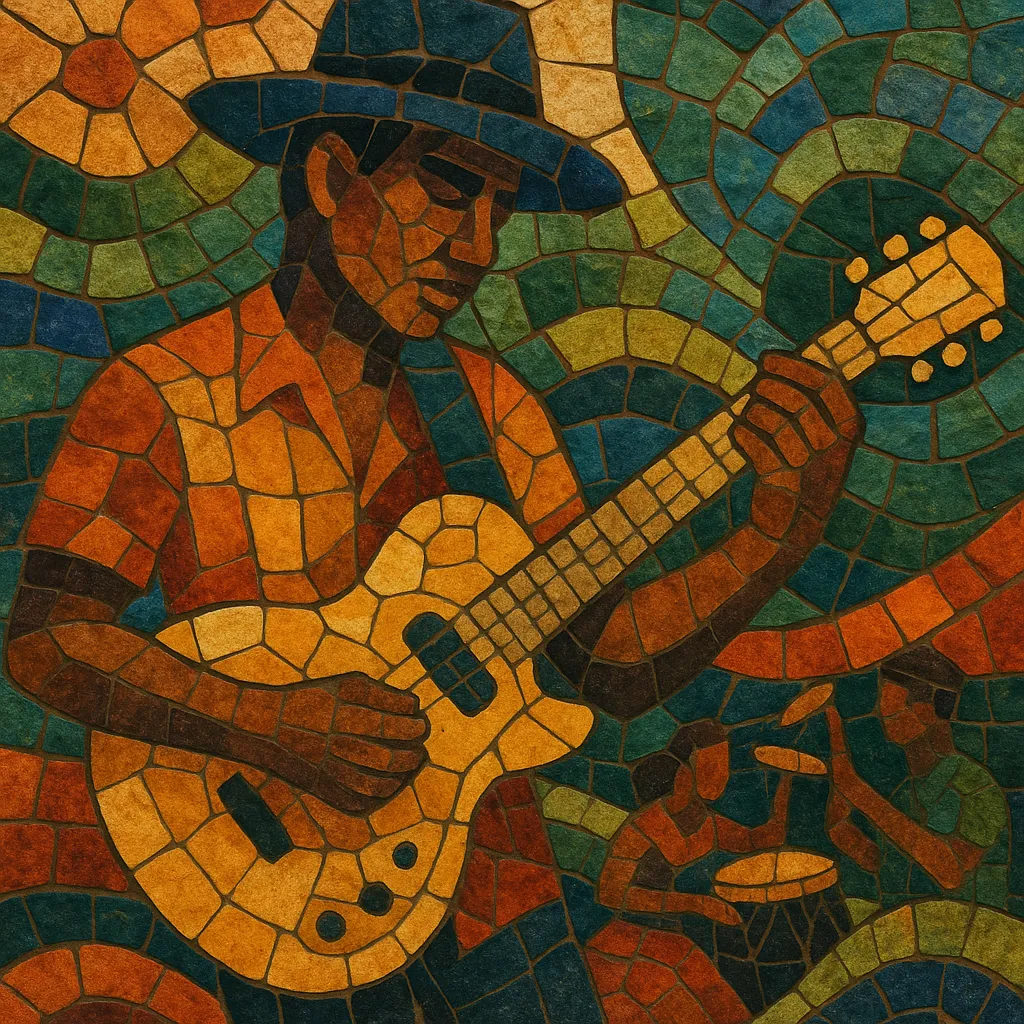Guitarrada is an instrumental, guitar-centered popular style from Brazil’s northern state of Pará, especially around Belém. It features bright, melodic electric-guitar leads that carry the tune, while rhythm sections draw on local Afro-Indigenous dance grooves.
The genre blends the syncopated swing of carimbó and the Caribbean pulse of merengue and cumbia with a touch of surf/rock guitar aesthetics. The result is festive, danceable music with catchy riffs, call-and-response figures, and a propulsive backbeat—often performed at community dances, festas, and stage shows.
Guitarrada emerged in the 1970s in Belém, Pará (Brazil), when local guitarists—most notably Mestre Vieira (Joaquim de Lima Vieira)—adapted regional dance rhythms (carimbó, siriá) and Caribbean currents (merengue, cumbia, calypso) to electric guitar–led instrumentals. The guitar stepped into a singer’s role, playing lyrical melodies over tight, syncopated rhythms and bass tumbaos.
Through the 1980s, guitarrada spread across dance halls and radio in northern Brazil. Records credited to bandleaders (e.g., “Vieira e Seu Conjunto”) foregrounded flamboyant guitar themes, crisp percussion, and bass lines that borrowed from both Amazonian and Caribbean idioms. The music’s festive character connected it to the parallel rise of lambada in the same region.
As the 1990s moved into the 2000s, guitarrada’s vocabulary fed into newer Paraense pop and dance movements, influencing the guitar language of lambada and helping shape the DNA of tecnobrega and brega calypso. While electronic production came to the fore, the signature singing-guitar riffs remained an instantly recognizable regional marker.
A new generation of guitarists, producers, and bandleaders has revived and expanded guitarrada—reissuing classic recordings, touring, and integrating contemporary production while preserving the upbeat, melodic essence born in Belém’s ballrooms.


